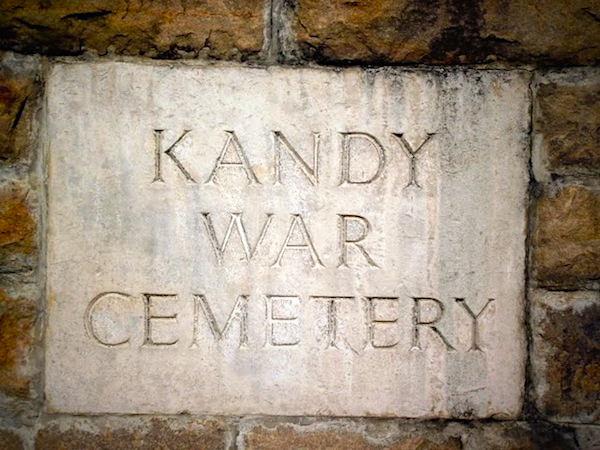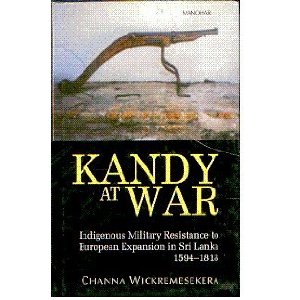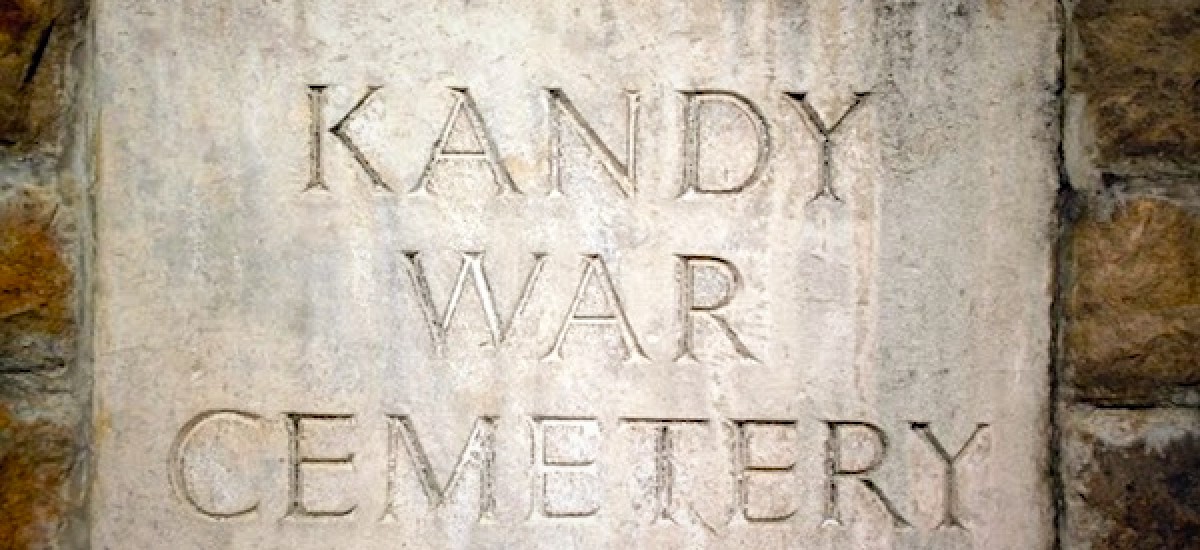
Image courtesy Sri Lanka Travel Guide
“When we think of it, we see at once what the confusion of thought was to which the Western poet [i.e. Rudyard Kipling], dwelling upon the difference between East and West, referred when he said, ‘Never the twain shall meet.’ It is true that they are not yet showing any real sign of meeting. But the reason is because the West has not sent out its humanity to meet the man in the East, but only its machine. Therefore the poet’s line has to be changed into something like this:
Man is a man, machine is machine,
And never the twain shall meet.” Rabindranath Tagore[1]
This is what the Portuguese unleashed in 1505 in Lanka, the machine of plunder. They were followed by the Dutch and ultimately the British in the late 18th century. They were able to control, exploit and plunder most of island except the Kandyan kingdom. The kingdom successfully resisted colonisation for nearly 200 years and only succumbed to the British in 1815, giving the lie to the oft told tale that there was not much resistance to the western colonial takeover of Asia. Up the road in India the Sikhs in the North and Tippu Sultan in the South offered firm resistance to the British. What made Kandy unique was that (in the words of the author) it ‘was no great South Asian power. It was very much a landlocked kingdom of rugged highlands with a small population of peasants living on subsistence agriculture’ (p. 17).
It would however be misleading to see the struggle of the kingdom solely through the prism of a modern anti-colonial struggle. Wickremesekera’s narrative illuminates a very hierarchical, economically unequal and impoverished kingdom struggle to survive. Their ability to exist was gradually undermined by the power struggles within their aristocratic system of governance.
What strikes one is the general lack of academic attention to this important period in Lankan history. As Dr Channa Wickremesekera says, there is, apart from a few brief references in general works on European colonial expansion and a few articles (mostly obscure), a paucity of material. There are of course a number of contemporary documents written by the colonial powers, together with travellers’ accounts. Indigenous accounts consist of hatan kavi (war poems) and historical narratives, of which the best known is the Rajavaliya (Line of Kings) (pp. 21-23). Out these disparate sources Wickremesekera has managed to weave a rich story of Kandyan resistance to colonialism, their military tactics, armoury, their ingenuity and powers of improvisation with the limited resources they had to hand. In doing so Wickremesekera gives us glimpse of their lives.

Kandy was not only the last kingdom to fall to the Europeans, it was also the last indigenous kingdom to emerge. According to the Culavamsa, the terrain was rugged and inhospitable. Only bandits and rebels were desperate enough to settle in its verdant hills. It was only in the mid- fifteenth century we first hear about the kingdom. It originally was under the aegis of the Kotte kingdom, but by around 1473 the kingdom we know as Kandy emerged as an independent entity (p. 27). By 1594 the Portuguese had subdued the Kotte kingdom and the Kandyan kingdom was now encircled and without a seaport, drastically reducing its ability to resist and develop its economy (pp. 35 & 43). The administration of the kingdom and the collection of revenue were in the hands of the upper castes (radala). The king’s main channels between him and the other chiefs were the two chief advisers (Adigars), who were also responsible for the administration of the capital Kandy. The kingdom was divided into districts (rata) and provinces (dissawa). These areas were administered by the Dissawas, who were members of the aristocracy. These officials were rewarded for their services in various ways: they were granted considerable tracts of lands (nindagam), and they received food, services and goods from the lower orders in their districts. As it was an autocratic and hierarchical society, their subjects had to defer to them when they were travelling by clearing the road and staying out of their path when they approached. No one except fellow aristocrats and the king could sit at their level. The king, his retinue and officials lived a luxurious life of privilege compared to the peasants and the artisans. Wickremesekera :
The extraction of surplus produce and labour was not only about providing sustenance to the elite. It was also about the assertion of power over the peasantry.
……The king asserted his control over all the people and resources in the kingdom by extracting surplus produce and services from everybody. As for the peasantry who toiled in the land … [it was] also a token of submission, an offer of tribute by the individual as a mark of his subservience (page 56).
Unlike the earlier much grander Anuradhapura and Polonnaruva kingdoms it was a subsistence one. The peasants lived in small, low-roofed thatched cottages built of sticks coated and lined with mud. They had meagre material possessions and few agricultural implements. The town of Kandy in the 18th century had straight streets but the only substantial building was the palace. Wealth and status depended on the control of land and the peasants who tilled the soil (page 89).
The economy reflected this; rice was the staple crop and a mainstay of their diet, supplemented by vegetable gardens and dry grains like kurakkan and meneri. Slash and burn cultivation (chena) was the norm. This sort of cultivation made the Kandyan peasant remarkably self-sufficient. There was little or no circulation of money and barter was the main form of transaction of goods and services.
The Kandyan kingdom relied on a core of professional troops, usually not from the kingdom. The peasantry provided the bulk of the army and were mobilised during periods of war. The majority of the king’s personal troops were Telegus from the bagadas (on the opposite coast). They played a very active role in the war against the Portuguese. With the kingdom being effectively encircled by the colonial powers, the kingdom found a new source of troops. These were deserters and others who were enticed to make common cause with the kingdom against their colonial masters. These consisted of Europeans, Africans (Kaffirs), Malays and other Asians, dwellers along the Canatic coast, Moors and Lascars from the subcontinent. The Malays and the Lascars , though a minority in the army, played over time a major role in the kingdom’s military operations, giving it a multicultural character (pp. 58 to 63).
Peasant soldiers travelled light, bringing their own food and supplies to last them for around 20 days. Each soldier carried his own cooking utensils. Food consisted of a meagre diet of rice, roti and coconut. The leaves from the talipot tree (a gigantic palm tree) provided shelter from the elements. Those higher up naturally camped in some style (p. 69). There were no reliable estimates of the population of the kingdom. C.R. De Silva estimates there were a little over 100,000 inhabitants in the mid sixteenth century. Wickremesekera estimates that the army did not exceed more than 20,000 troops. The more likely number was 10,000 men at arms (pp. 74 and 75).
The Kandyan kingdom possessed an abundance of iron embedded in the rocks found close to the surface. This they smelted in rudimentary furnaces and also manufactured steel, enabling the production of an array of swords, spears, arrow-heads and battle axes. This required an expertise similar to that needed for agricultural implements like hoes and sickles (pp. 89 to 92).
The introduction of muskets and artillery by the imperial powers presented a formidable challenge to the Kandyan craftsmen. This they met with ingenuity. It was hard to buy muskets because of the embargo and a lack of money, but many were captured and others constructed. The firearms they made (admittedly not in large quantities) lacked sophistication but were models of what can be done with limited tools and resources. Pebbles were sometimes used instead of bullets. Charges for the musket were carried in bamboo containers or even in linen cartridges, ammunition was carried in coconut shells. Where they could not find raw materials like flint they improvised with pebbles.
They were also able to construct mortars, howitzers and cannon, the last of small calibre. The jewel in their armoury was possibly the kodituwakku, also called the gingal or grasshopper gun by the Europeans.(pp. 93 to 104). Wickremesekera:
It generally resembled a heavy musket or an enormous pistol and sometimes little more than an iron tube of large calibre fitted to a wooden stock. Whatever the appearance a common feature of all gingals was the two wooden or iron legs fixed to the front part of the stock which made it appear like a grasshopper to the Dutch (p. 104).
The forces on hand were merely those available to any large landlord in the subcontinent, yet the Kandyans kept the Portuguese, Dutch and British at bay for almost two centuries. Colonial observers noted that they did this by not directly confronting invading armies. Once the enemy entered the terrain of the kingdom, the strategy changed to one to trapping them in the mountains, by cutting off their supply lines and blocking their escape routes. They also put impediments in their path like cutting down large trees. They use field fortifications and sometimes built stockades. They then waited for the inhospitable climate and starvation to force the invaders to retreat before delivering the coup de grace. They also attacked and harassed isolated outposts and small detachment of troops, and on occasion mount frontal assaults. Other strategies were to foment unrest in the European territories and induce troops to defect. They were at their most effective in defending their own terrain, but were less successful when it came to engaging the enemy in the enemy’s own heartland (pp. 129 to 158).
The end came at the hands of the British, at that time at the zenith of their power. They could marshal greater manpower and better logistics than the Dutch or Portuguese ever could. Compounding the problem was dissension between the nobility and the king, resulting in a section of the nobility inviting the British into their territory. The majority of the population took part in a bloody insurrection against the invaders. The British put it down ruthlessly with the help of a substantial section of the aristocracy.
One would have appreciated greater attention to the politics, art and architecture and to the material life of the inhabitants of the kingdom. Nevertheless Wickremesekera paints a vivid picture of a society of maybe 100,000 souls who fought the creeping and inexorable colonisation of the period with courage, tenacity and ingenuity.
The majority of the population lived a meagre existence; the governance of their society was fundamentally undemocratic and depended on shifting alliances between the king, his advisors and the nobility. They lacked the resources of the earlier and grander hydraulic civilisations. Given this, it is remarkable that the kingdom with a patina of multiculturalism withstood its enemies and endured so long. They were defeated ultimately by a determined great power, with resistance being fatally undermined by their autocratic and unaccountable leaders.
Unlike the anti-colonial struggle that the LSSP engaged in the 1930s and 1940’s, we have no clear cut idea why a poor and exploited peasantry resisted on behalf of their autocratic rulers. Their ruling elite, at no stage encouraged an island wide rebellion; except when it suited their material and strategic interests. Their aristocratic leaders were prepared to parlay with the Dutch and the British for their own strategic interests. The kings of Kandy only married women from the Kshatriya (princely) caste. To ensure this they made a deal with Dutch, to break their embargo to allow their brides to come over from India. Their limited world view allowed sections of the nobility to betray their people’s interests. Still the system endured, on the backs of the wretched peasantry who fought, starved and died for the aristocracy. Wickremesekera book is a welcome contribution to the study of the region, and one hopes that others of a similar kind will follow.
Editors note: Kandy at War: Indigenous Military Resistance to European Expansion in Sri Lanka 1594-1818 is available for purchase via Amazon. Operation Liberation: 25 years on was Channa Wickremesekera’s most recent submission to Groundviews. For more writing, click here.
[1] Tagore, Rabindranath: ‘East and West’ in Dutta, Krishna and Robinson, Andrew (editors) (1997) Rabindranath Tagore: An Anthology, Picador, p. 212.

